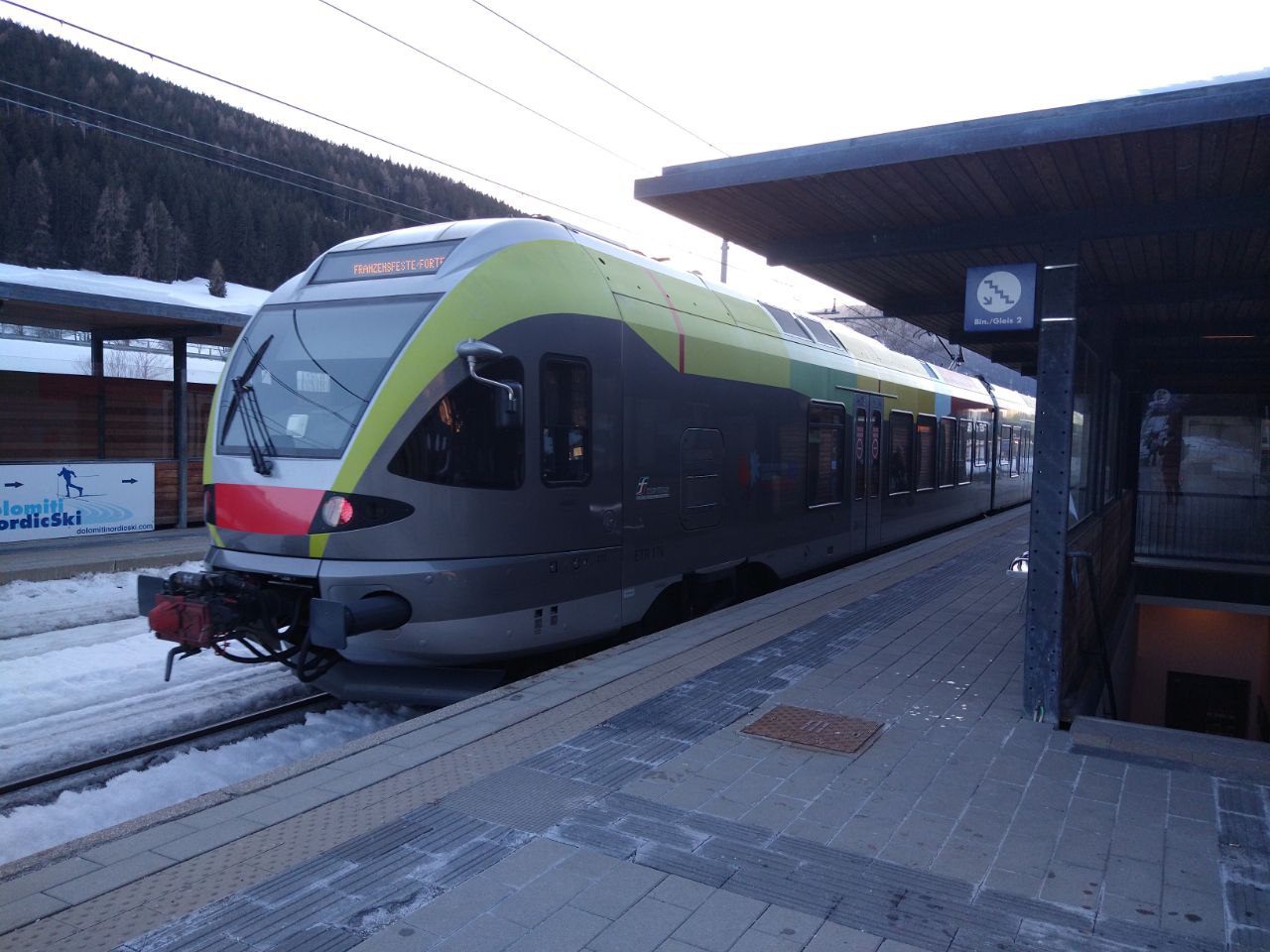
At the beginning of 2022 I took a short trip to South Tyrol, in Italy. The region is generally considered to have among the best public transport in the country and, even though I wasn't able to check out its transit network as thoroughly as I would have liked to, what I did see was definitely enough to impress me: the stations were modern, clean and wheelchair-accessible; so were the trains themselves, while the service was extremely frequent, taking full advantage of the line.
I travelled between the stations of Villabassa and Lienz (Austria), on a cross-border regional train run by SAD, which operates most of the buses and trains in South Tyrol.

The train, originating in Fortezza/Franzensfeste, travels along the Pustertalbahn up to the border station of San Candido/Innichen and then on part of the Drautalbahn up to Lienz. Both lines are entirely electrified, at 3kV DC on the Italian side and 15kV AC in Austria, with trains switching between voltages in San Candido; they are also single-tracked, however with enough passing loops to mantain a fairly frequent service.
San Candido is also where trains heading to Austria change conductors, with the Austrian section being essentially run as an ÖBB (=Austrian railways) service, just with Italian rolling stock. This is likely also why this part of the journey isn't sold on Italian ticket machines: tickets have to be purchased on board.
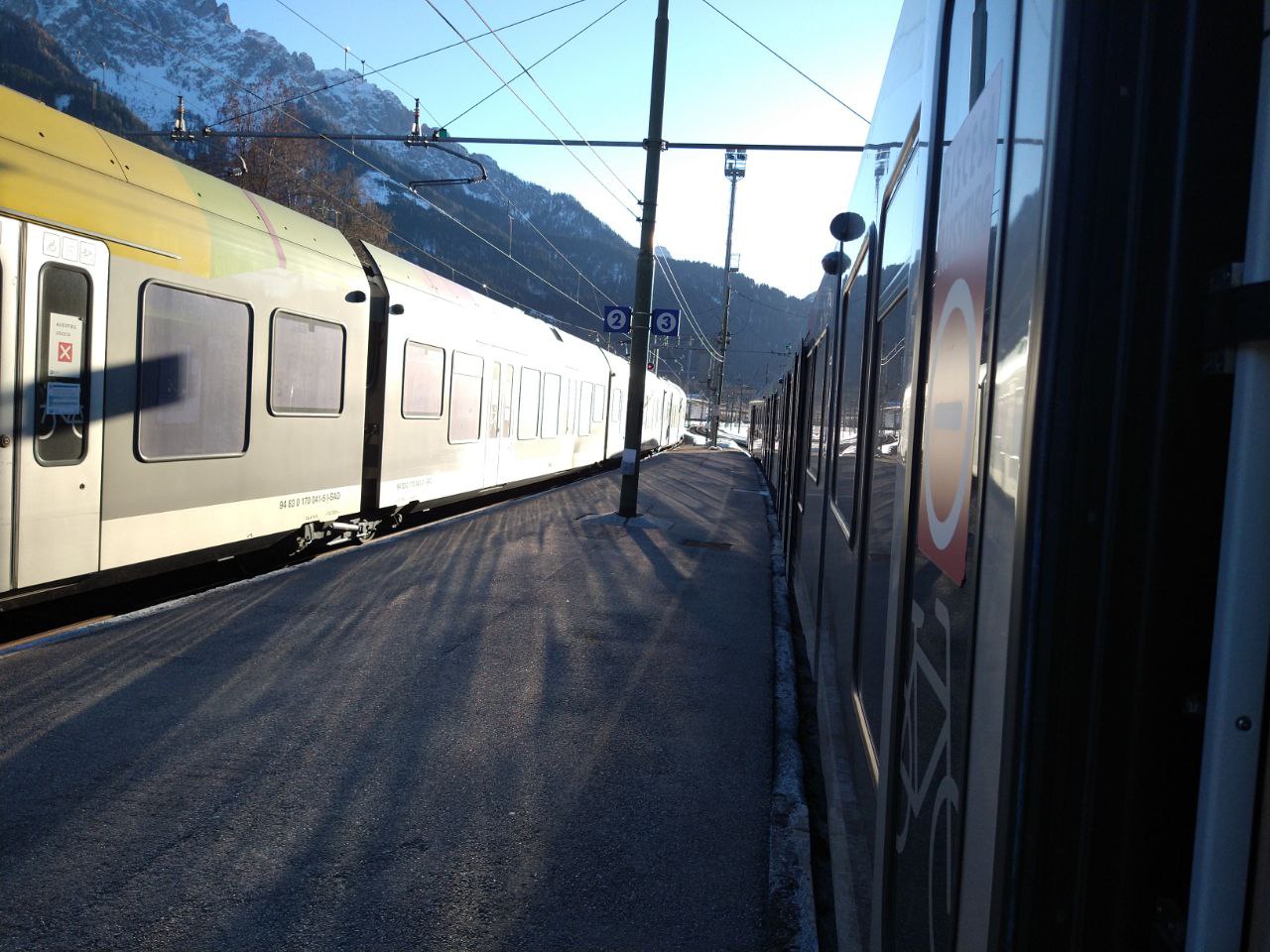

However, the impressive part is that, despite the single-tracked line and not particularly high maximum speeds (understandable given that this is in the mountains), SAD still operates trains every 30 minutes between Fortezza and San Candido (and sometimes up to Sillian), with every other train terminating in Lienz.
Frequencies like these make what would already be a pretty good regional rail system into a truly excellent one - trains arrive so often that you might not even need to worry about the timetable, while tourists can move between the various towns and ski slopes (which are, in some cases, directly connected to the train stations) without having to use a car (a great way to reduce pollution), both of which are features cleverly promoted in the bus and train timetable leaflet found at tourist information centres.
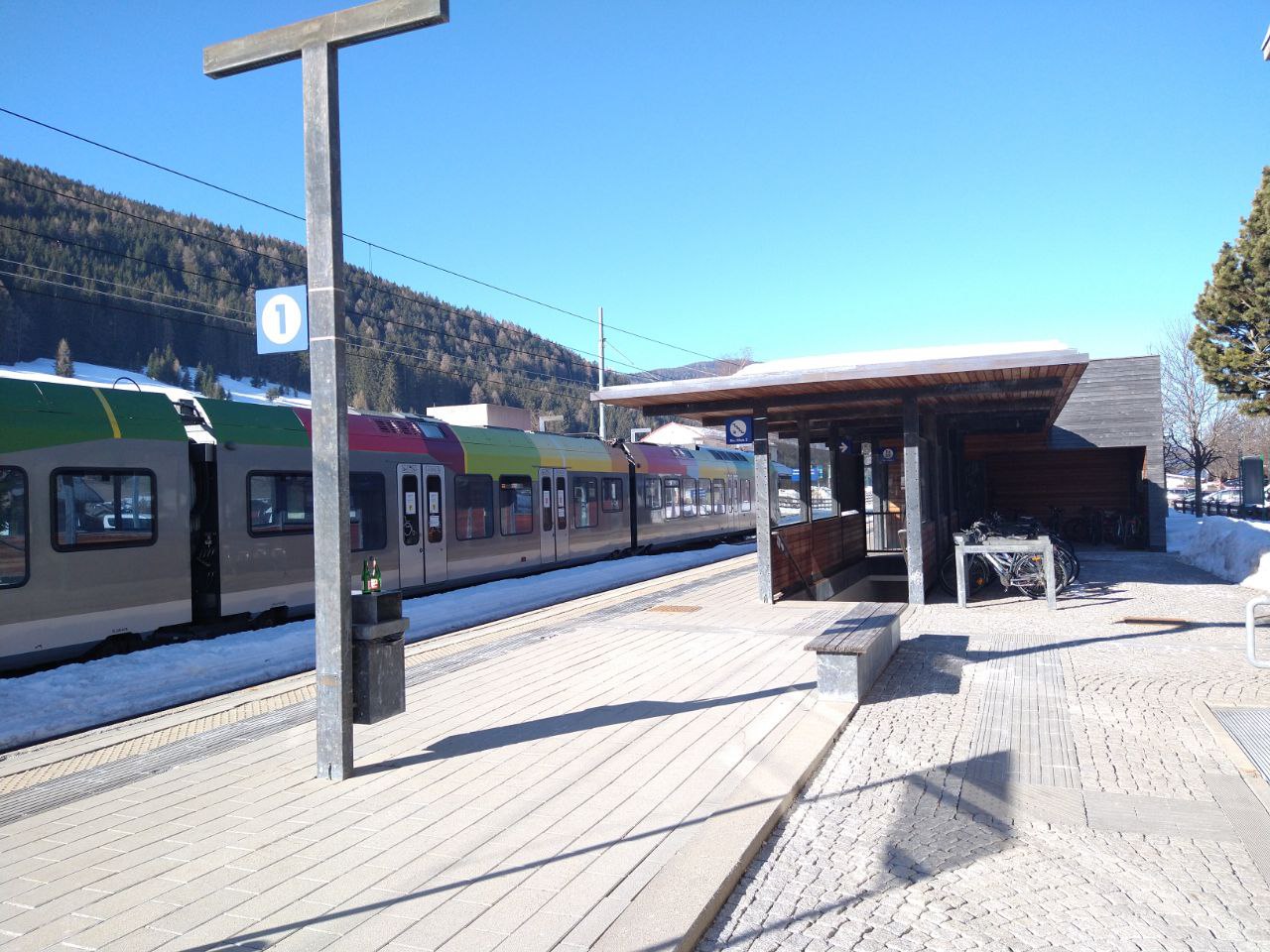
Service is carried out using Stadler FLIRT multi-voltage trains (ETR 170), capable of operating both under the 3kV DC used in Italy and the 15kV AC used in Austria. These trains have only entered service fairly recently and as such have a very modern interior, with wide windows, accessible toilets, information LCDs, bike and ski storage (very important especially given the amount of tourists in this area) and separate recycling bins.
It's also difficult not to notice the ample amount of spaces dedicated to wheelchair users and prams, most of which have foldable seats inside of them so they can alternatively be used as a standard seating area. In general, it's evident that much care and attention has been given to accessibility on the line: all the stations (minus the one in San Candido, which is planned to be moved closer to the centre) are accessible and the trains of course feature step-free access.
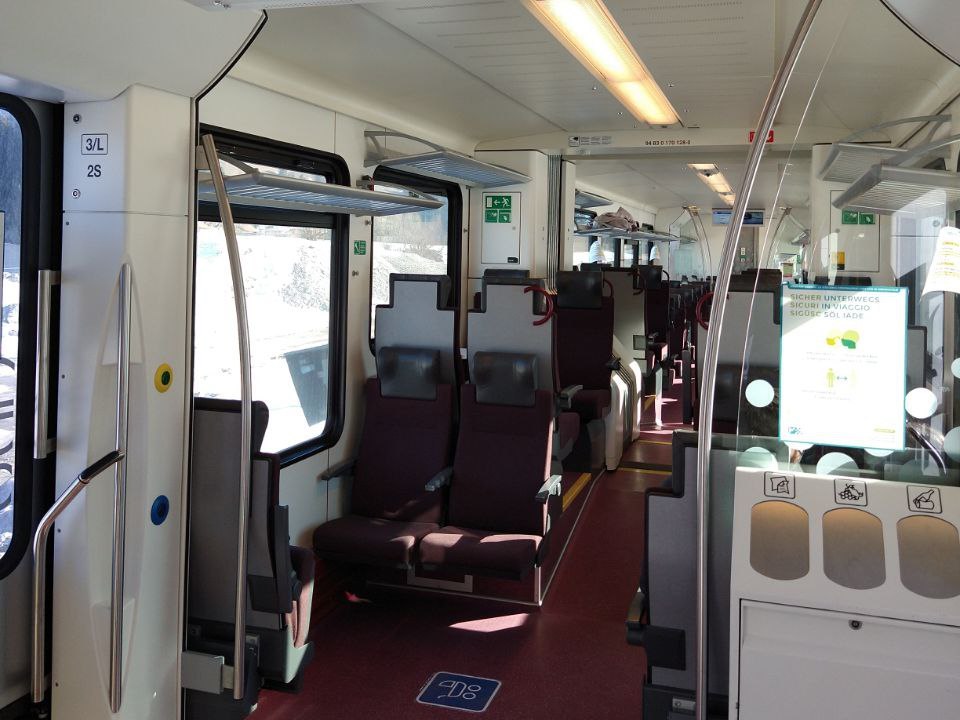
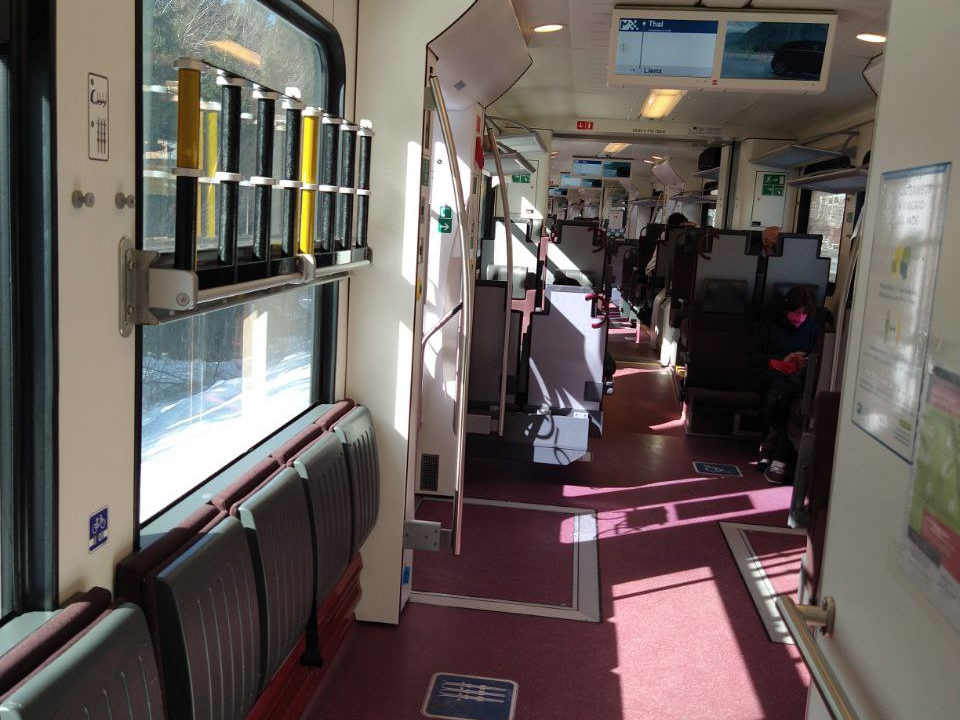
As with the rolling stock, the stations on this line are also modern and well-kept. The platforms are 55cm high, to allow for level boarding, and elevators are present for wheelchair users, prams, people with suitcases and anyone that wants to use them (accessibility features can be useful for a whole number of users, not just people in wheelchairs).
Signage is of course bilingual, with station names being written both in Italian and German, and train announcements are in both languages as well.
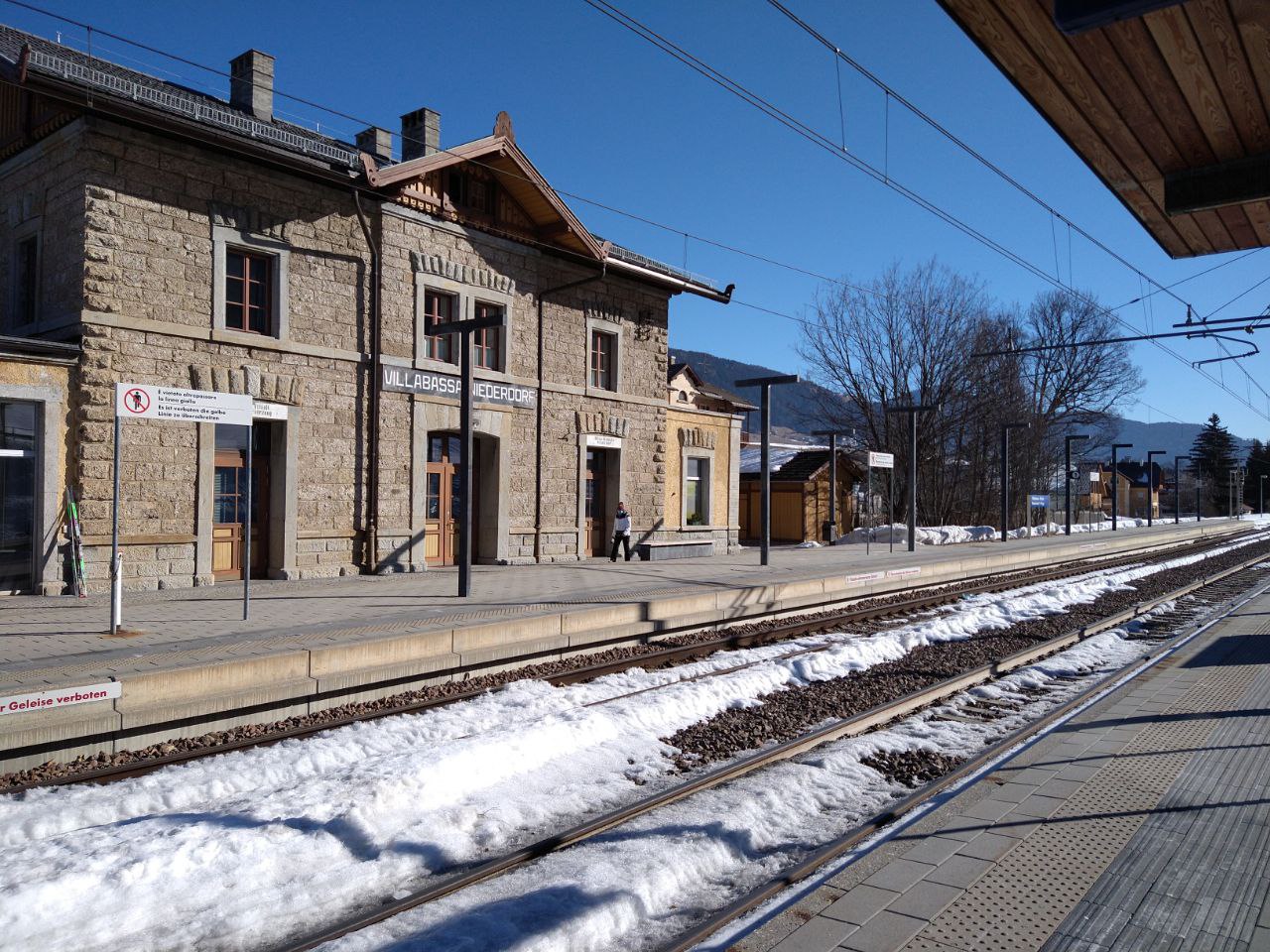

So, what can we learn from the trains in South Tyrol? Two things are present here which make this line truly great, and which any public transit service must have in order to be useful to the public and thus successful: frequency and user experience.
This line essentially does all of those things: the service is frequent and convenient to use; the stations are new and accessible. Unsurprisingly, this meant that there were a lot of people taking the train, even in Villabassa, which only has a population of 1600.
My only complaints were with the ticketing system: not being able to buy the tickets for the Austrian section on the Italian ticket machines is quite annoying and confusing for the end user; and there was no indication (not even a sign) that they had to be purchased on board of the train. We had to ask someone working there, which is certainly not ideal. Additionally, the only ticket machine in Villabassa was out of service; it was interesting however to see that the machines let you buy both train and bus tickets, quite a useful feature.
But that's, essentially, the only major complaint I had about the trains there. Everything else was pretty nice, with only a few minor improvements that I could think of, like using larger displays for the departures board at the stations (the standard ones used throughout Italy can only fit half the number of displayed trains when accomodating for the bilingual station names).